画像をダウンロード y=e^x transformations 339989-Y=e^x transformations
Composition of Transformations The symbol for a composition of transformations (or functions) is an open circle A notation such as is read as "a translation of (x, y) → (x 1, y 5) after a reflection in the line y = x" You may also see the notation written as This process must be done from right to leftWe create a new random variable Y as a transformation of X For example, Y = X2 We wish to nd the distribution of Y or fY (y) Two techniques we will discuss for continuous rv's (1) Distribution function (cdf) technique (2) Change of variable (Jacobian) technique 1574 Evaluate a triple integral using a change of variables Recall from Substitution Rule the method of integration by substitution When evaluating an integral such as ∫3 2x(x2 − 4)5dx, we substitute u = g(x) = x2 − 4 Then du = 2xdx or xdx = 1 2du and the limits change to u = g(2) = 22 − 4 = 0 and u = g(3) = 9 − 4 = 5
Exponential Function Formula
Y=e^x transformations
Y=e^x transformations-About Press Copyright Contact us Creators Advertise Developers Terms Privacy Policy & Safety How works Test new features Press Copyright Contact us CreatorsWhat is the range of f(x)= e ** 4?
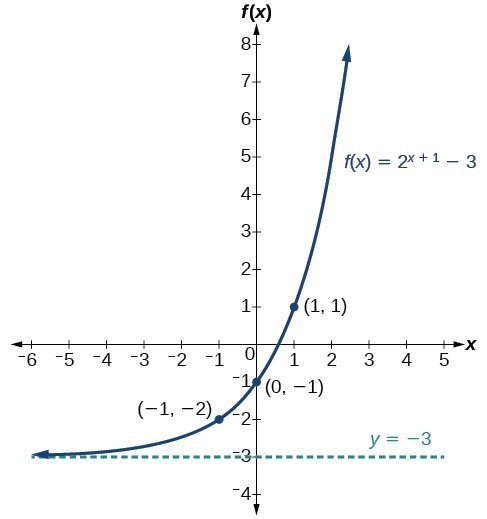



Graph Exponential Functions Using Transformations College Algebra
Graph of y = e ^ (x 3) uF (x) = e x?" Recall from the graphical transformations section that the negative sign attached to the x indicates a reflection across the yaxis Therefore, the graph of h (x) = e x should look exactly like the graph of f (x) = e x, reflected across the yaxisLecture 16 General Transformations of Random Variables 163 Differentiating, we get f Y(y) = f X(g−1(y)) 1 g0(g−1(y)) The second term on the right hand side of the above equation is referred to as the Jacobian of the transfor mation g(·) It can be shown easily that a similar argument holds for a monotonically decreasing function gas well and we obtain
Transcribed image text Find the Jacobian of the transformation x=e" sin(78), Y e cos(78) Step 1 For the transformation et sin(78), e' cos(78), the Jacobian is ax ax @x,y) ar 08 atr, 8) ay ay ar sin(70) sin (70) Tecos(70) 7ecos (70) e cos(78) Te sin(70) Teisin (70) Step 2 Recall that the determinant of a 2 x 2 matrix is ab cd ad be be Therefore, ex , 0) x 9' (e ** sin(70Transformation of curves Higher Functions of graphs can be transformed to show shifts and reflections Graphic designers and 3D modellers use transformations of graphs toThanks to all of you who support me on Patreon You da real mvps!
A transformation of an exponential function has the form latex f\left(x\right)=a{b}^{xc}d/latex, where the parent function, latexy={b}^{x}/latex, latexb>1/latex, is shifted horizontally c units to the left stretched vertically by a factor of a if a > 0 compressed vertically by a factor of a if 0 < a < 1The nature of the underlying relation is Y = a e b x, where alpha and beta are parameters of the relation To get this relation in linear model form, one transforms both sides of the equation to obtain ln(Y) = ln(a e b x) = ln(a) ln(e b x) = ln(a) b x = bF(x) = a e b (x c) d This exploration is about recognizing what happens to the graph of the exponential function when you change one or more of the coefficients a, b, c, and dWe start with the blue graph which is the graph of the function f(x) = e xYou can manipulate this graph by modifying the coefficients in the ways which are listed in the boxes beneath the graph




Answered Starting With The Graph Of Y E Use Bartleby




Transformations Exponential And Logarithm Functions Kus Objectives Bat
Describe this transformation which maps y=e^x onto the graph of these functions 1 Y= e^3x 2 Y= e^x3 3 Y= lnx My solutions, which I am unsurA $y$transformation affects the y coordinates of a curve You can identify a $y$transformation as changes are made outside the brackets of $y=f(x)$ We examine $y$transformations first since they behave as expected Upward shift $f(x)\rightarrow f(x)4$, this is a $y$shift This does not affect $x$ coordinates but all the $y$ coordinates go up by 4F(x) = x 2 Here are some simple things we can do to move or scale it on the graph We can move it up or down by adding a constant to the yvalue g(x) = x 2 C Note to move the line down, we use a negative value for C C > 0 moves it up;
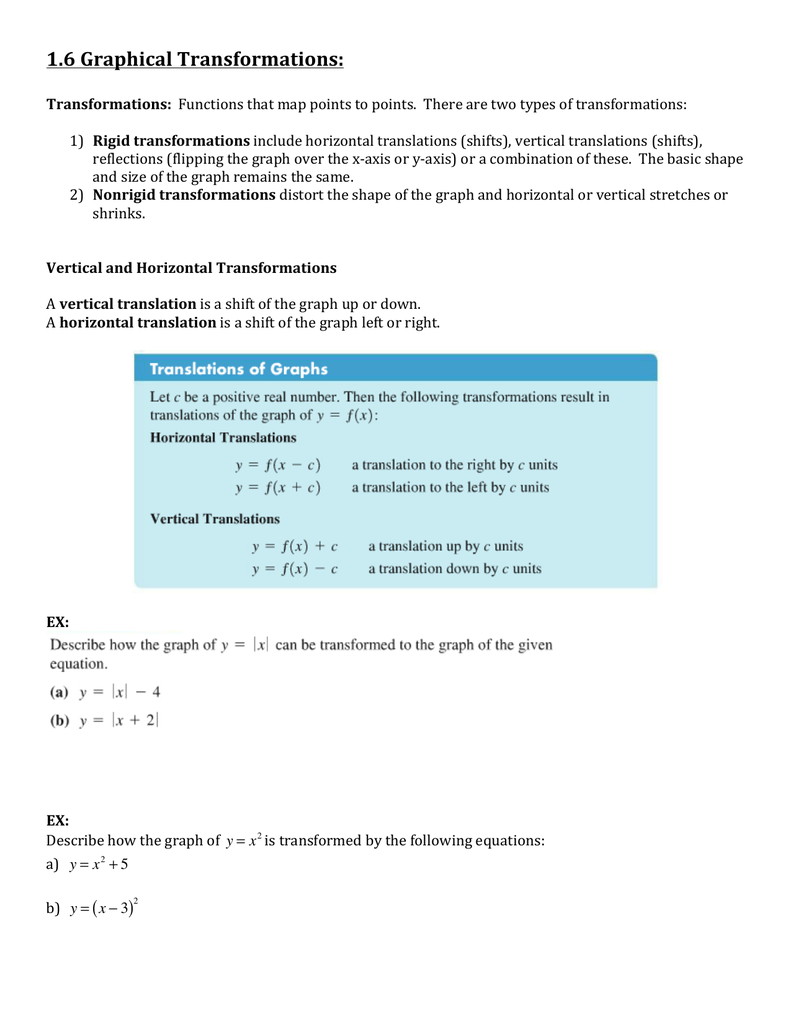



Document
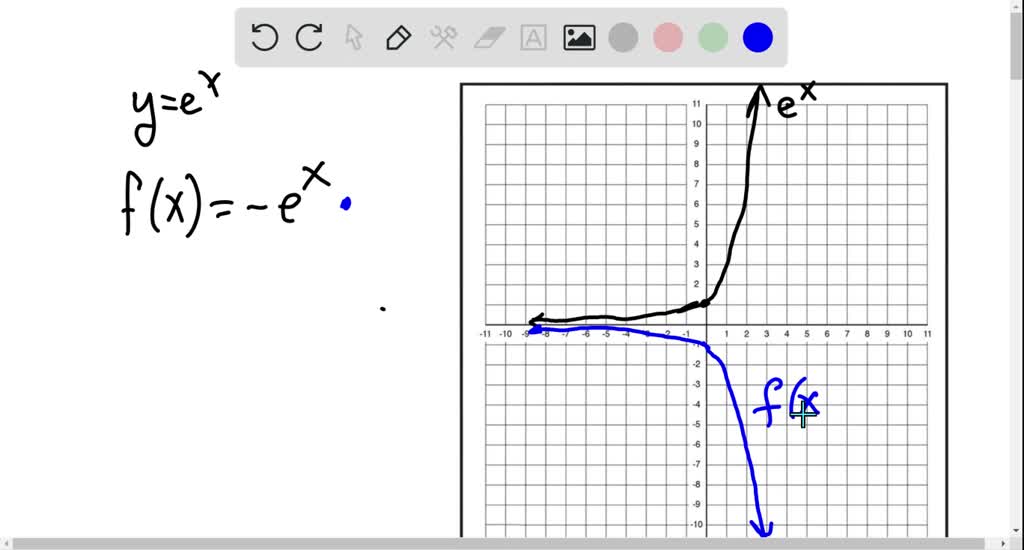



Solved 7 14 Graph The Function Not By Plotting Points But By Starting From The Graph Of Y E X In Figure 1 State The Domain Range And Asymptote F X E X
$1 per month helps!! The domain is RR, the range is (0;oo) The domain is the subset of RR for which all operations in the function's formula make sense Since e is a positive real constant, it can be raised to any real power, so the domain is not limited It is RR The range is the set of function's values Since a positive real constant is raised to a real power, the result is always positive, and is neverTranscript Sal walks through several examples of how to write g (x) implicitly in terms of f (x) when g (x) is a shift or a reflection of f (x) Created by Sal Khan Google Classroom Facebook Twitter Email Putting it all together Identifying function transformations This
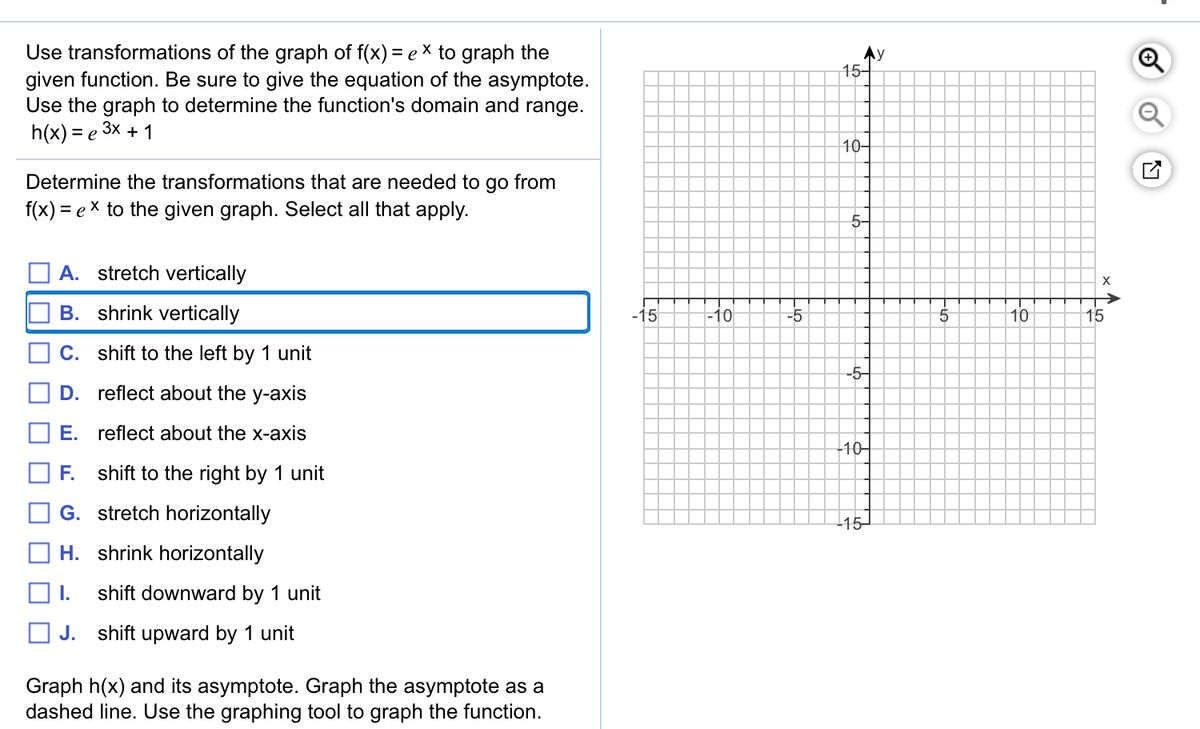



Answered Use Transformations Of The Graph Of Bartleby
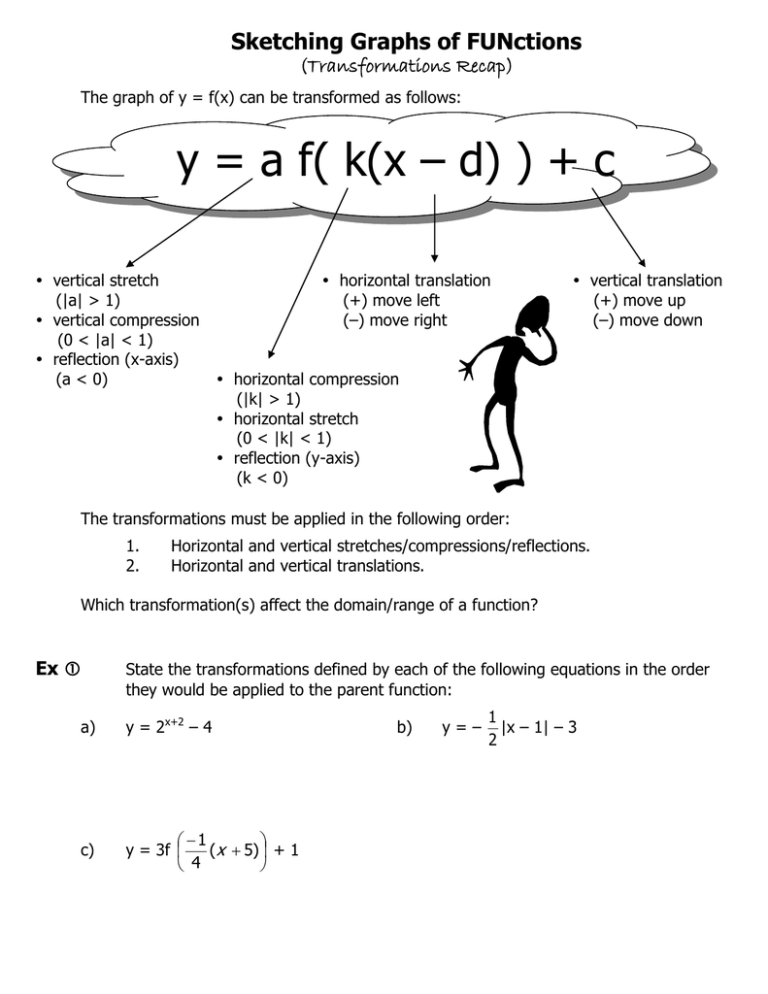



Y A F K X D C
When deciding whether the order of the transformations matters, it helps to think about whether a transformation affects the graph vertically (ie changes the yvalues) or horizontally (ie changes the xvalues) Transformation Vertical or Horizontal Effect?EX2jY = y = 1 25 (y 1)2 4 25 (y 1) Thus EX2jY = 1 25 (Y 1)2 4 25 (Y 1) = 1 25 (Y2 2Y 3) Once again, EX2jY is a function of Y Intuition EXjY is the function of Y that bests approximates X This is a vague statement since we have not said what \best" means We consider two extreme cases First suppose that X is itself a function ofDescribe the Transformation y=x^2 The parent function is the simplest form of the type of function given For a better explanation, assume that is and is The transformation being described is from to The horizontal shift depends on the value of
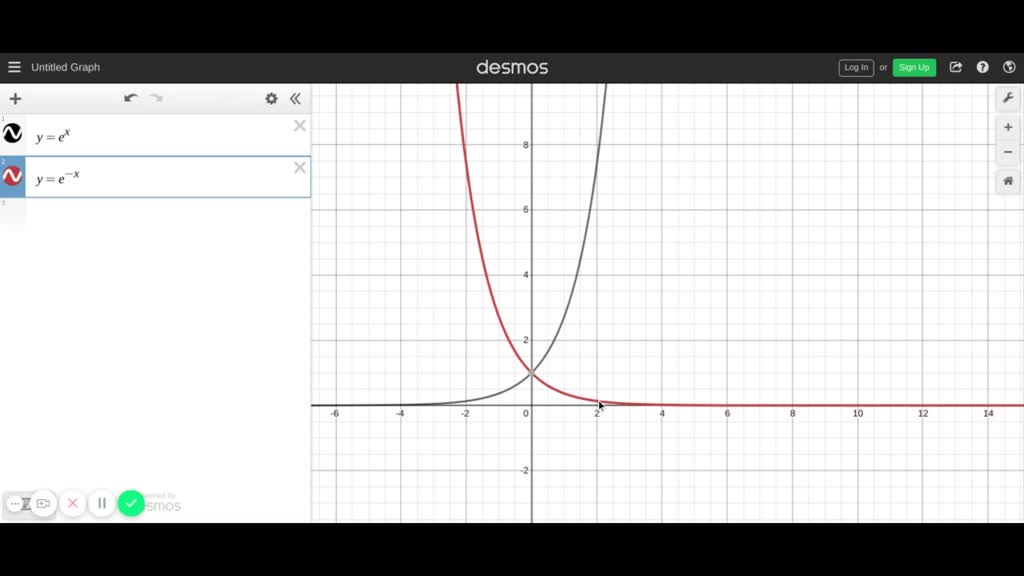



Solved Begin With The Graph Of Y E X Figure 27 And Use Transformations To Graph Each Function Determine The Domain Range And Horizontal Asymptote Of Each Function F X E X
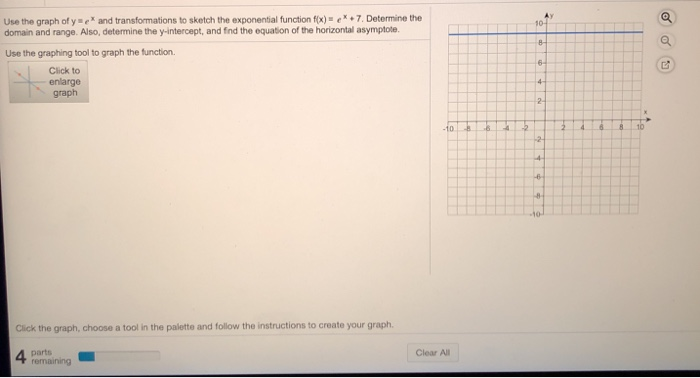



Solved Use The Graph Of Y E And Transformations To Sketch Chegg Com
In this setting, e 0 = 1, and e x is invertible with inverse e −x for any x in B If xy = yx, then e x y = e x e y, but this identity can fail for noncommuting x and y Some alternative definitions lead to the same function For instance, e x can be defined as → ()Transformations of the Sinusoidal Graph By Lacy Gainey We are going to examine the graphs of y = a sin(bx c) for different values of a, b, and c and explore the impact of each of these parameters Before I have students examine transformations of the sinusoidal graph, I will have them examine transformations of the function for a review Review Graph the followingStart studying Transformation Rules (x,y)> Learn vocabulary, terms, and more with flashcards, games, and other study tools
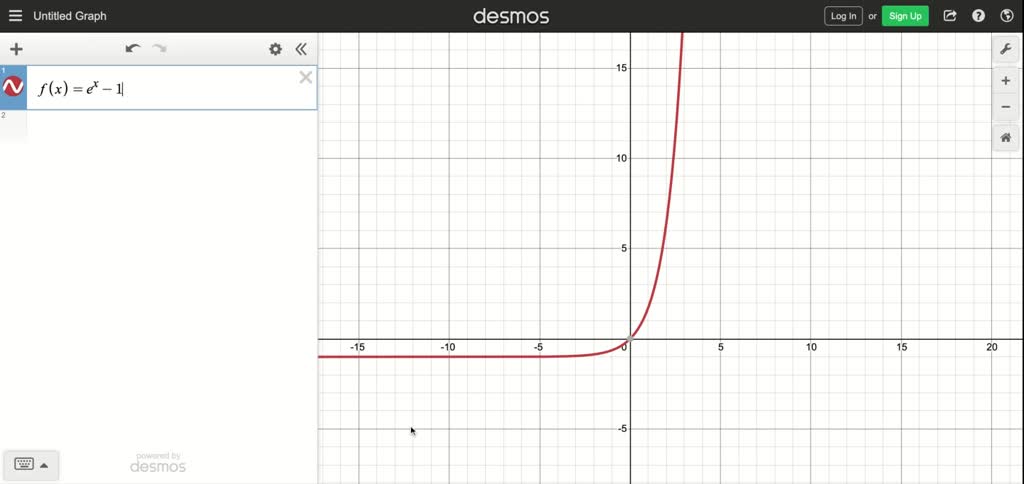



Solved Begin With The Graph Of Y E X Figure 27 And Use Transformations To Graph Each Function Determine The Domain Range Horizontal Asymptote And Y Intercept Of Each Function F X E X 1




Graph Of Y E X 3 Using Graph Transformations Youtube
F ( x) = 1/ x d moves the graph up and down the y axis by that many units Adding some value to x before the division is done f ( x) = 1/ (xc) moves the graph along the x axis by that manyC < 0 moves it down We can move it left or right by adding a constant to the xvalue g(x) = (xC) 2A horizontal stretch or shrink by a factor of 1/k means that the point (x, y) on the graph of f(x) is transformed to the point (x/k, y) on the graph of g(x) Examples of Horizontal Stretches and Shrinks Consider the following base functions, (1) f (x) = x 2 3, (2) g(x) = cos (x) The graphical representation of function (1), f (x), is a parabola What do you suppose the grap




Chapter 6 Exponential And Logarithmic Functions And Applications Section Ppt Download




Using Combinations Of Transformations Sketch The Graph Of Each Of The Following Y Dfrac 1 2 E X 4 Snapsolve
Once students understand the rules which they have to apply for reflection transformation, they can easily make reflection transformation of a figure For example, if we are going to make reflection transformation of the point (2,3) about xaxis,Shifting up or down Vertical Shifting left or right HorizontalDefinition A linear transformation is a transformation T R n → R m satisfying T ( u v )= T ( u ) T ( v ) T ( cu )= cT ( u ) for all vectors u , v in R n and all scalars c Let T R n → R m be a matrix transformation T ( x )= Ax for an m × n matrix A By this proposition in Section 23, we have
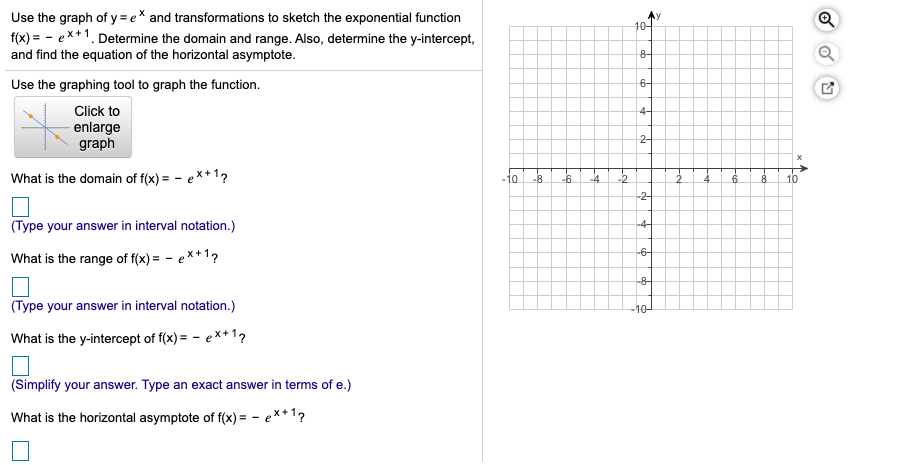



Solved 1 Use The Graph Of Y E And Transformations To Sketch Chegg Com
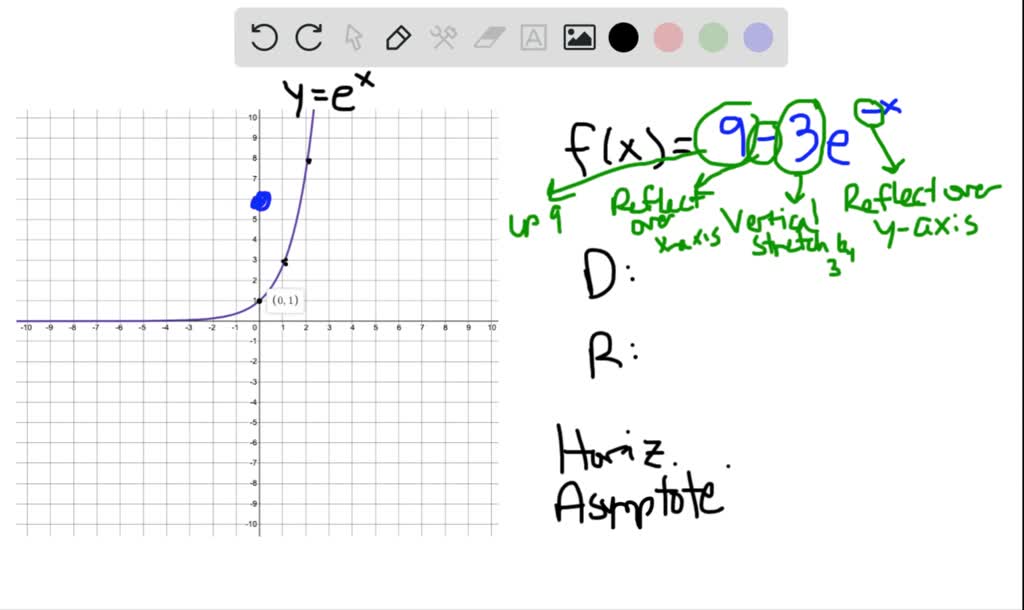



Solved Begin With The Graph Of Y E X Use Transformations To Graph Each Function Determine The Domain Range And Horizontal Asymptote Of Each Function Graph Can T Copy F X 9 3 E X
Describe the Transformation y=x^22 The parent function is the simplest form of the type of function given For a better explanation, assume that is and is The transformation being described is from to Find the vertex form of Tap for more steps Complete the square forAnswer to Solved AY 10 Use the graph of y=e* and transformations to Transcribed image text AY 10 Use the graph of y=e* and transformations to sketch the exponential function f(x)= e * 6 Determine the domain and range Also, determine the yintercept, and find the equation of the horizontal asymptoteMove slider below to add more terms 3
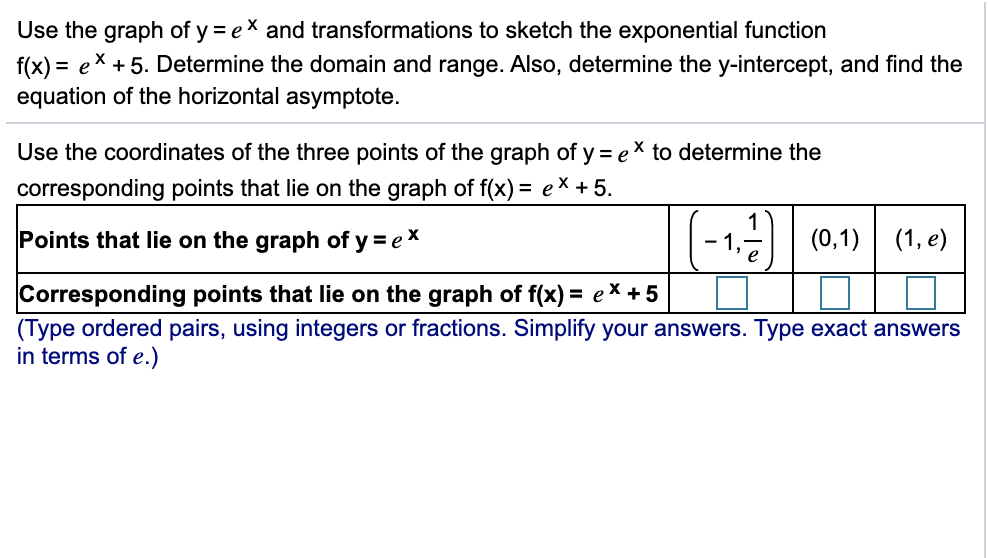



Solved Use The Graph Of Y Ex And Transformations To Sketch Chegg Com
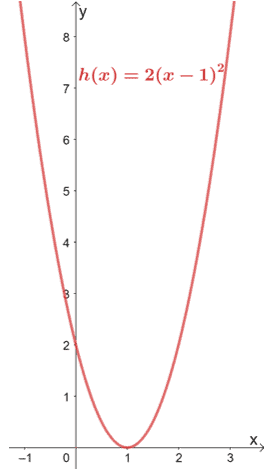



Vertical Stretch Properties Graph Examples
We're told the graph of y equals 2 to the X is shown below alright which of the following is the graph of y equals 2 to the negative X minus 5 so there's two changes here instead of 2 to the X we have 2 to the negative x and then we're not leaving that alone we then subtract 5 so let's take them step by step so let's first think about what y equals 2 to the negative x will look like well anyNow consider a transformation of X in the form Y = 2X2 X There are five possible outcomes for Y, ie, 0, 3, 10, 21, 36 Given that the function is onetoone, we can make up a table describing the probability distribution for Y TABLE 3 ProbabilityofaFunction oftheNumberofHeadsfromTossing aCoinChapter 14 Transformations "Give me a lever long enough and a fulcrum on which to place it, and I shall move the world" — Archimedes Please note some data currently used in this chapter was used, changed, and passed around over the years in STAT 4 at UIUC Its original sources, if they exist, are at this time unknown to the author




Ex Match The Graphs Of Reflected Exponential Functions To Equations Youtube



Bestmaths
Correlation is a scaled version of covariance;Ie\((x,y) \rightarrow (x8, y3)\) Transformations of Quadratic Functions We can apply the transformation rules to graphs of functions Here is the graph of a function that shows the transformation of reflection The first picture shows the function \(f(x) = x^3\)Because all of the algebraic transformations occur after the function does its job, all of the changes to points in the second column of the chart occur in the second coordinate Thus, all the changes in the graphs occur in the vertical measurements of the graph New How points in graph of f(x) visual e↵ect function become points of new graph




Transforation Of Exponential Graphs Y Ex Matching Cards With Answers Teaching Resources
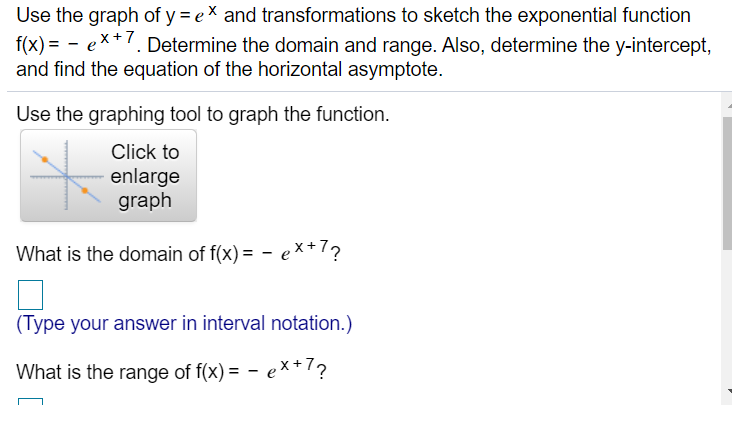



Solved Use The Graph Of Y Ex And Transformations To Sketch Chegg Com
Describe the Transformation y=e^x y = ex y = e x The parent function is the simplest form of the type of function given y = (e)x y = ( e) x Remove parentheses y = ex y = e x The transformation from the first equation to the second one can be found by finding a a, h h, and k k for each equationLinear transformations as matrix vector products Image of a subset under a transformation im (T) Image of a transformation Preimage of a set Preimage and kernel example Sums and scalar multiples of linear transformations More on matrix addition and scalar multiplication Next lesson Linear transformation examples You can see this by following a point on the graph of y = e x through both of these transformations y = e x Point (1, e) (or pick any point you like) y = e 6x Point (1/6, e) Note that this point is 1/6 as far from the yaxis as (1, e) is IOW, the point (1, e) has been "compressed" toward the yaxis y = e 6(x 2)
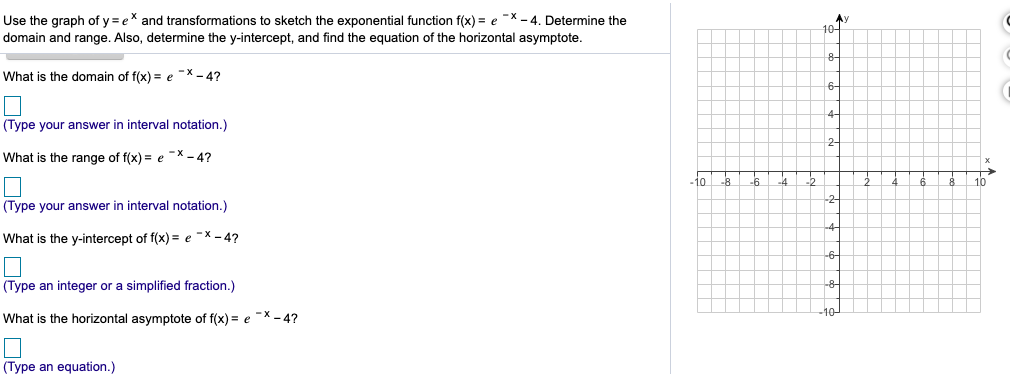



Solved Use The Graph Of Y E And Transformations To Sketch Chegg Com
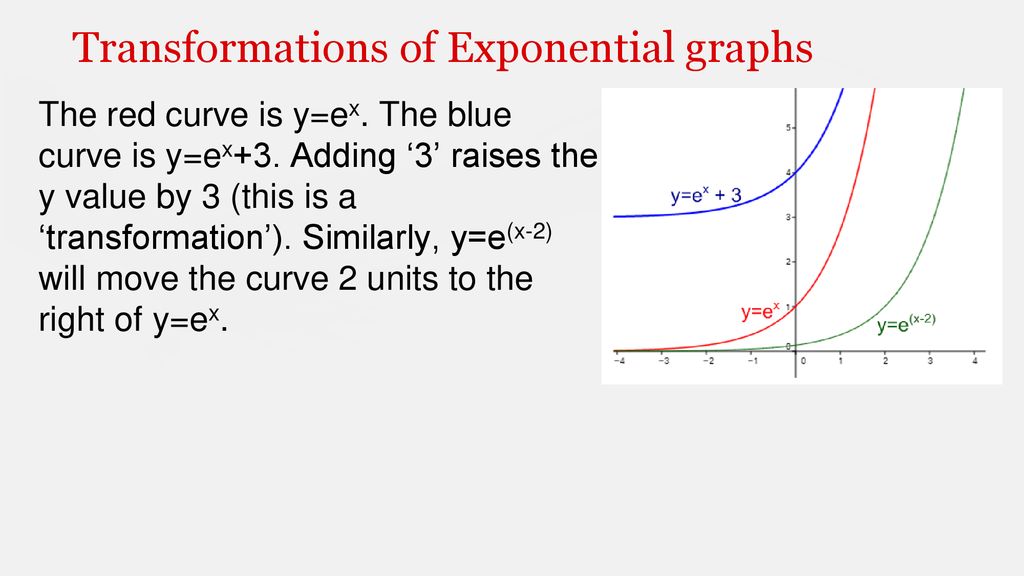



Logarithms And Exponentials Ppt Download
Begin with the graph of y = e^x and use transformations to graph the function Determine the domain, range, and horizontal f (x) = 2 e^(x/2)Graph transformations Given the graph of a common function, (such as a simple polynomial, quadratic or trig function) you should be able to draw the graph of its related functionClick the graph, choose a tool in the palette and follow the instructions to create your graph Use the graph of y=e* and transformations to sketch the exponential function f(x) = e ** 4 Determine the domain and range Also, determine the yintercept, and find the equation of the horizontal asymptote
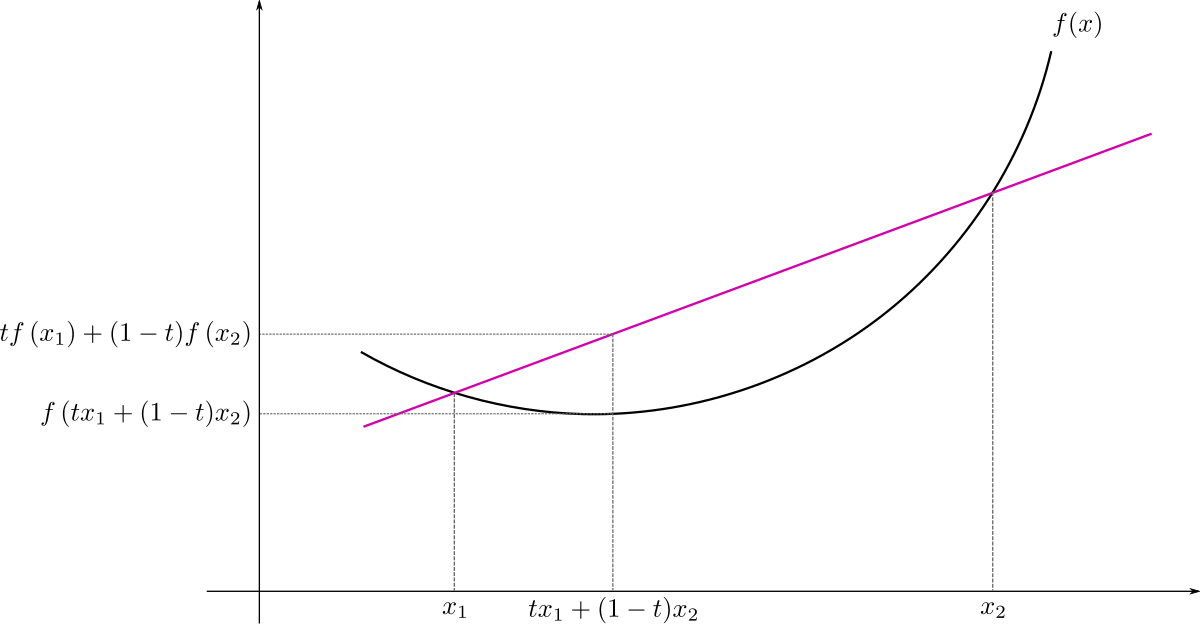



Jensen S Inequality Wikipedia
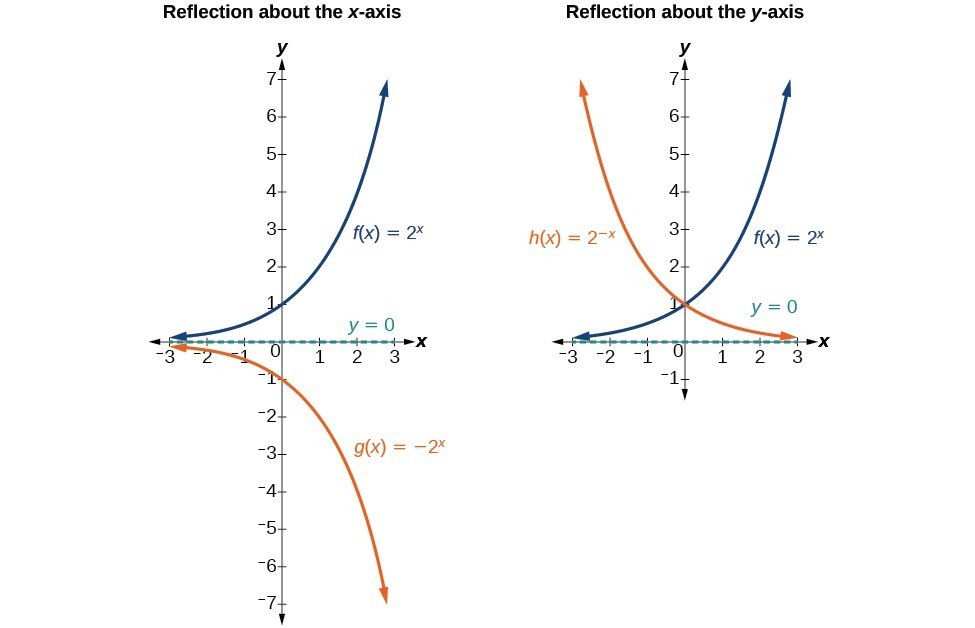



Graph Exponential Functions Using Transformations College Algebra
Note that the two parameters always have the same sign (positive, negative, or 0) Note also that correlation is dimensionless, since the numerator and denominator have the same physical units, namely the product of the units of \(X\) and \(Y\)Try it an online graphing tool can graph transformations using function notation Use an online graphing tool to graph the toolkit function f (x)= x2 f ( x) = x 2 Now, enter f (x5) f ( x 5), and f (x)5 f ( x) 5 in the next two lines Now have the calculator
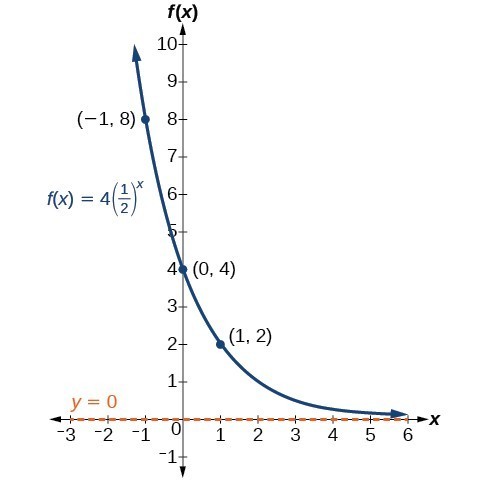



Graph Exponential Functions Using Transformations College Algebra
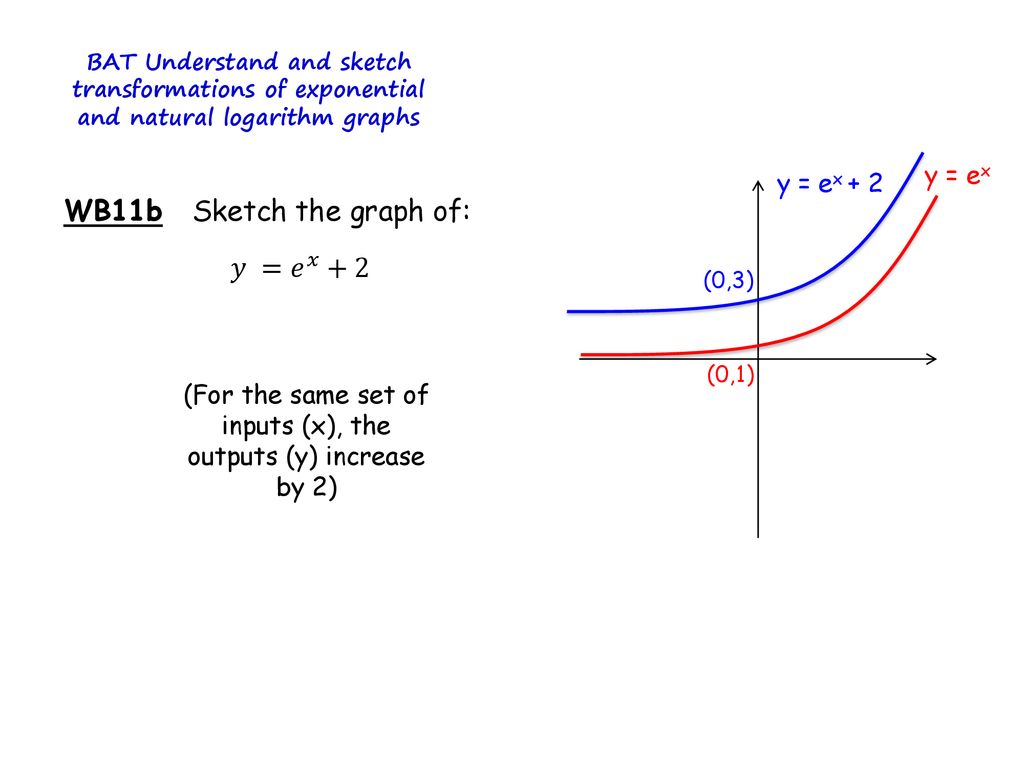



Exponential And Logarithms Transformations Graphs Ppt Download



Exponential Functions The Engage Wiki
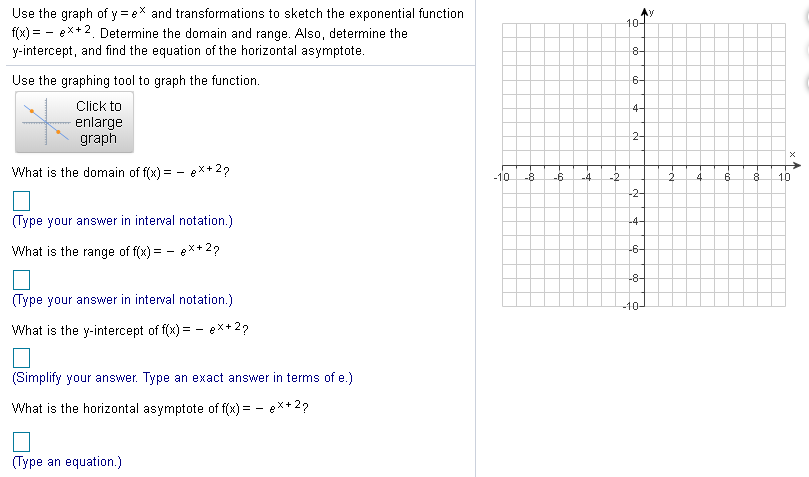



Solved Use The Graph Of Y E And Transformations To Sketch Chegg Com
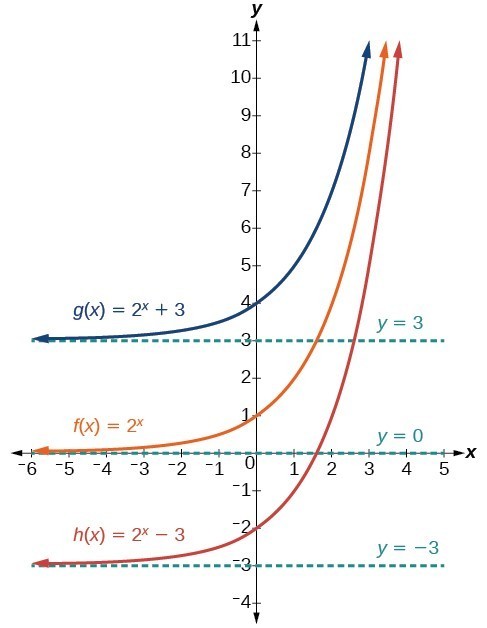



Graph Exponential Functions Using Transformations College Algebra




Solved Use The Graph Of Y E And Transformations To Sketch Chegg Com




Introduction We Are Going To Look At Exponential Functions We Will Learn About A New Special Number In Mathematics We Will See How This Number Can Be Ppt Download




Use The Graph Of Y E And Transformations To Sketch The Exponential Function F X New Determine Homeworklib




Graph And Transformations Of F X E X Youtube




C3 Transformations
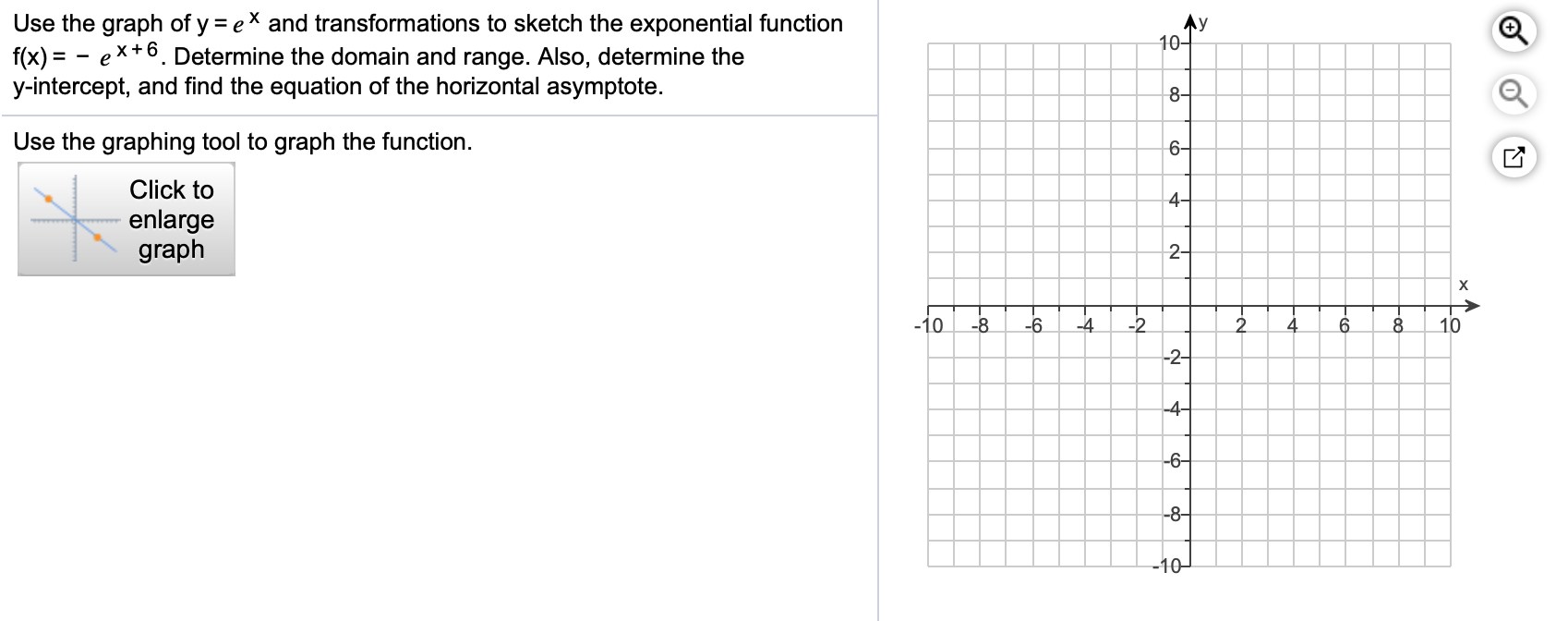



Solved Use The Graph Of Y Ex And Transformations To Sketch Chegg Com
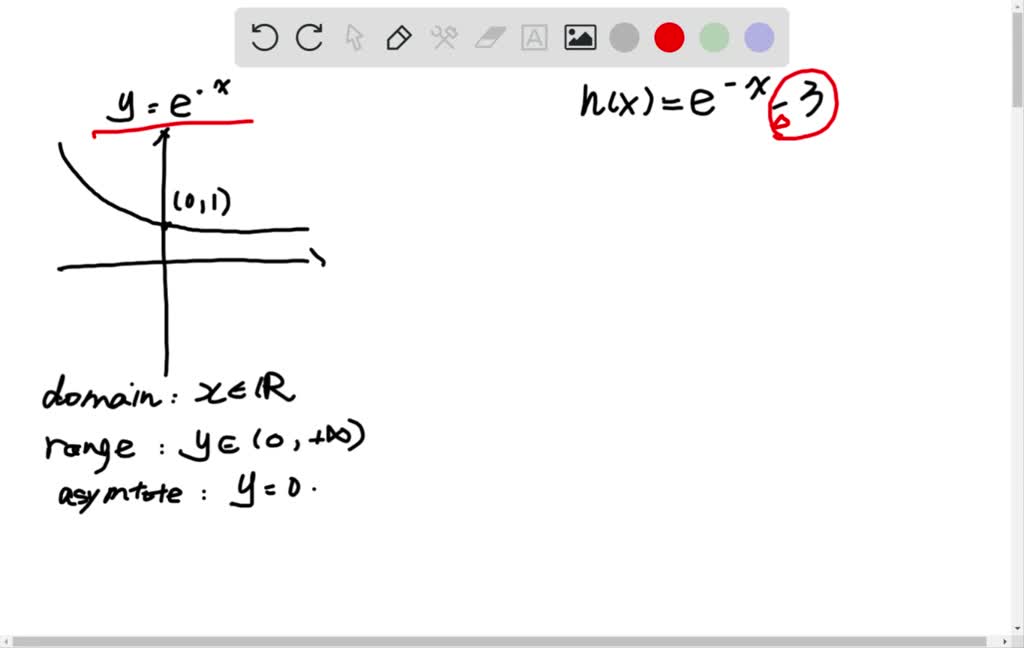



Solved The Figure Shows The Graph Of F X Ln X Use Transformations Of This Graph To Graph Each Function Graph And Give Equations Of The Asymptotes Use The Graphs To Determine Each Function S Domain



Exponential Function Formula




Solved Use The Graph Of Y Ex And Transformations To Sketch Chegg Com




1 51 7 Notes Analyzing Graphs Of Functions



Jscholarship Library Jhu Edu




4 1 4 3 Notes
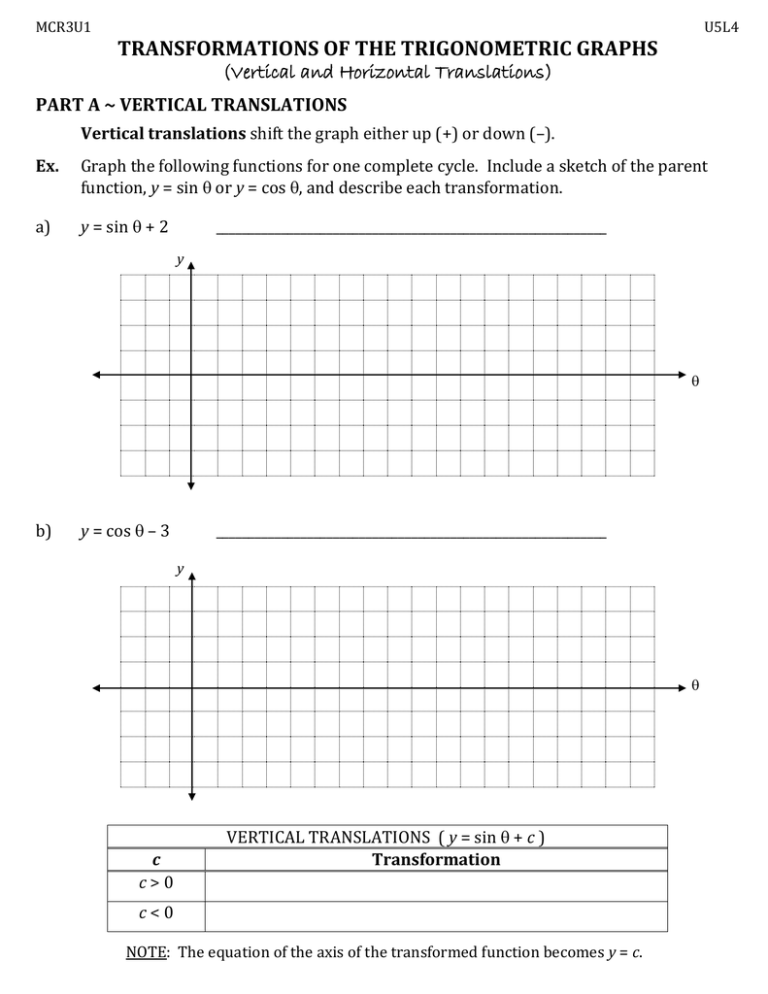



Transformations Of The Trigonometric Graphs Vertical And Horizontal Translations
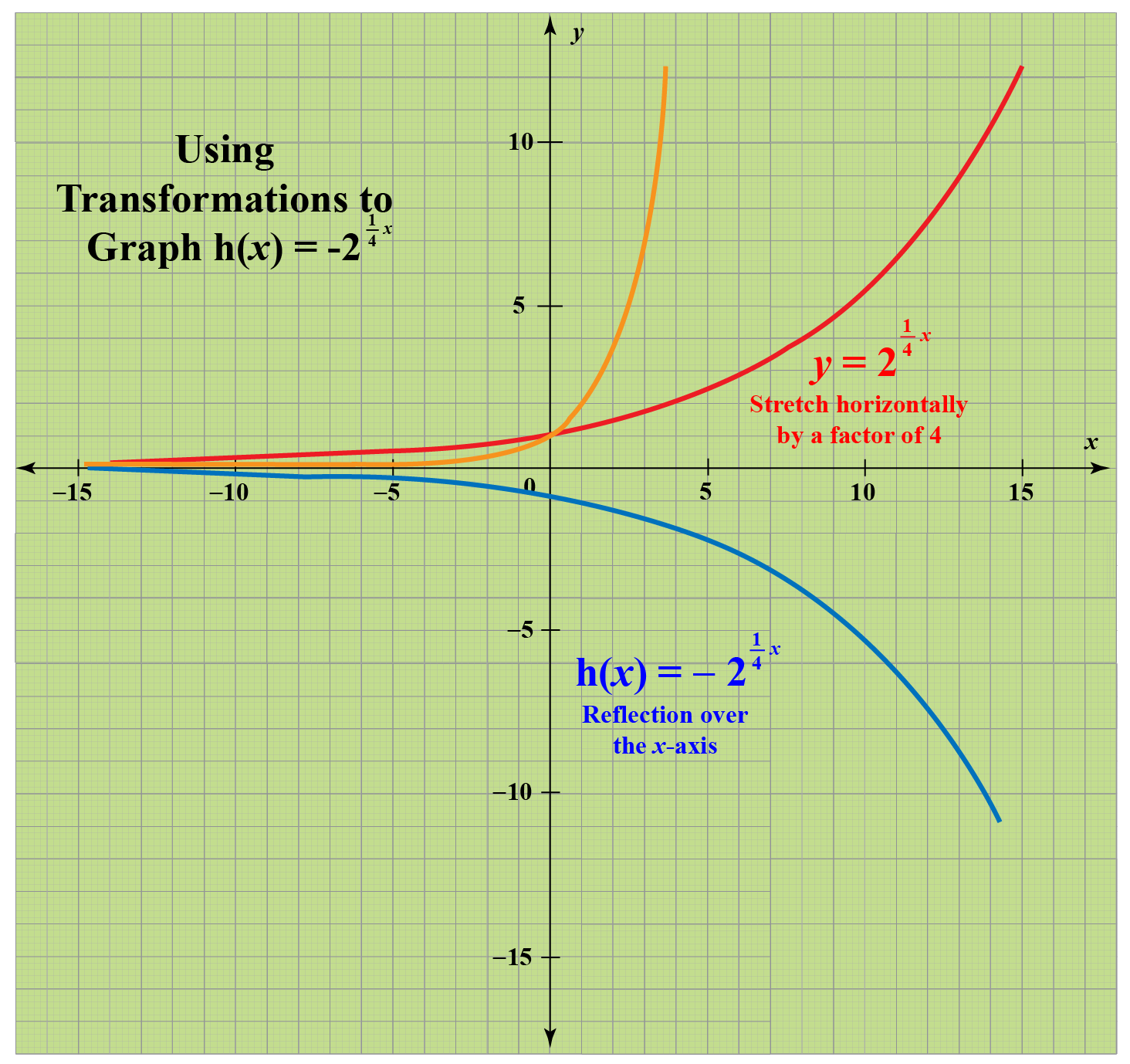



Le Plus Rapide E X Graph Transformations



Transformation In Y E X Physics Forums
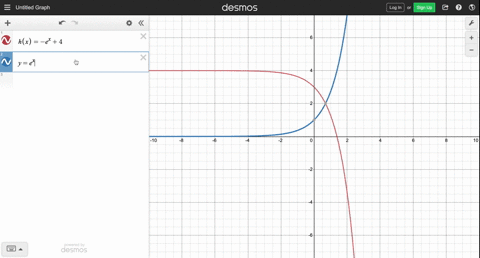



Solved Use Transformations Of The Graph Of Y E X To Graph The Function Write The Domain And Range In Interval Notation See Example 3 M X E X 3



Bestmaths
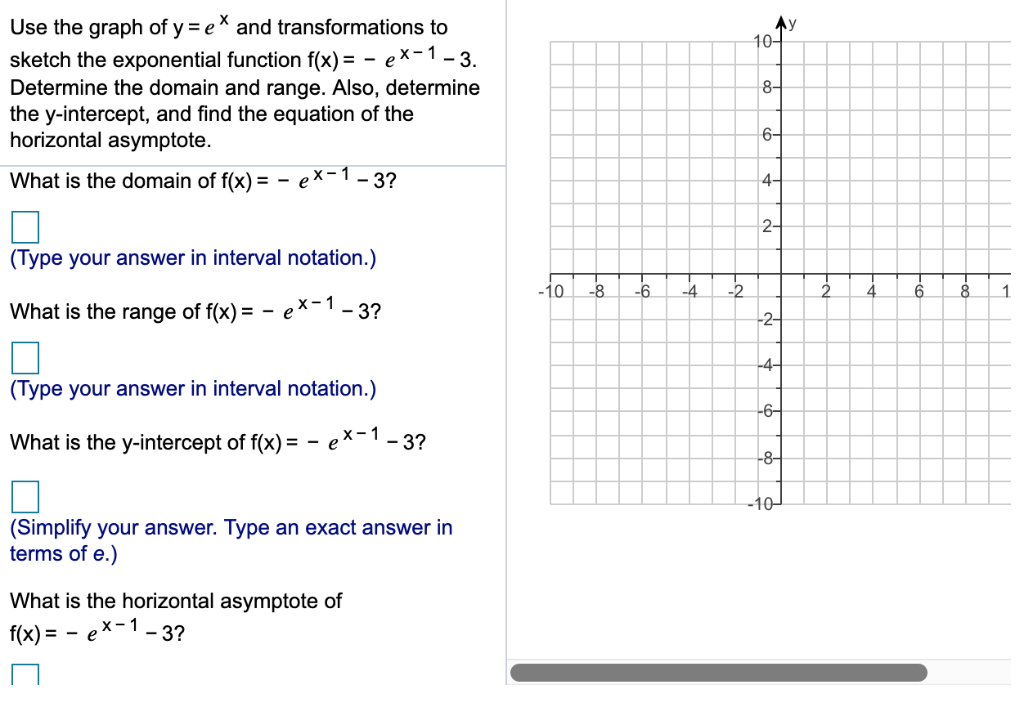



Solved X Use The Graph Of Y E Ay 10 And Transformations To Chegg Com




Graph Exponential Functions Using Transformations College Algebra
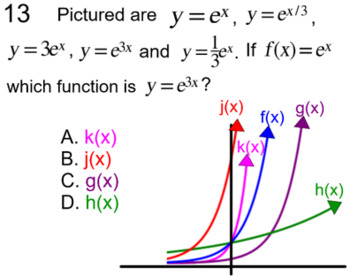



Transformations Of Functions Intro Study Aides 8 Assignments For Power Point
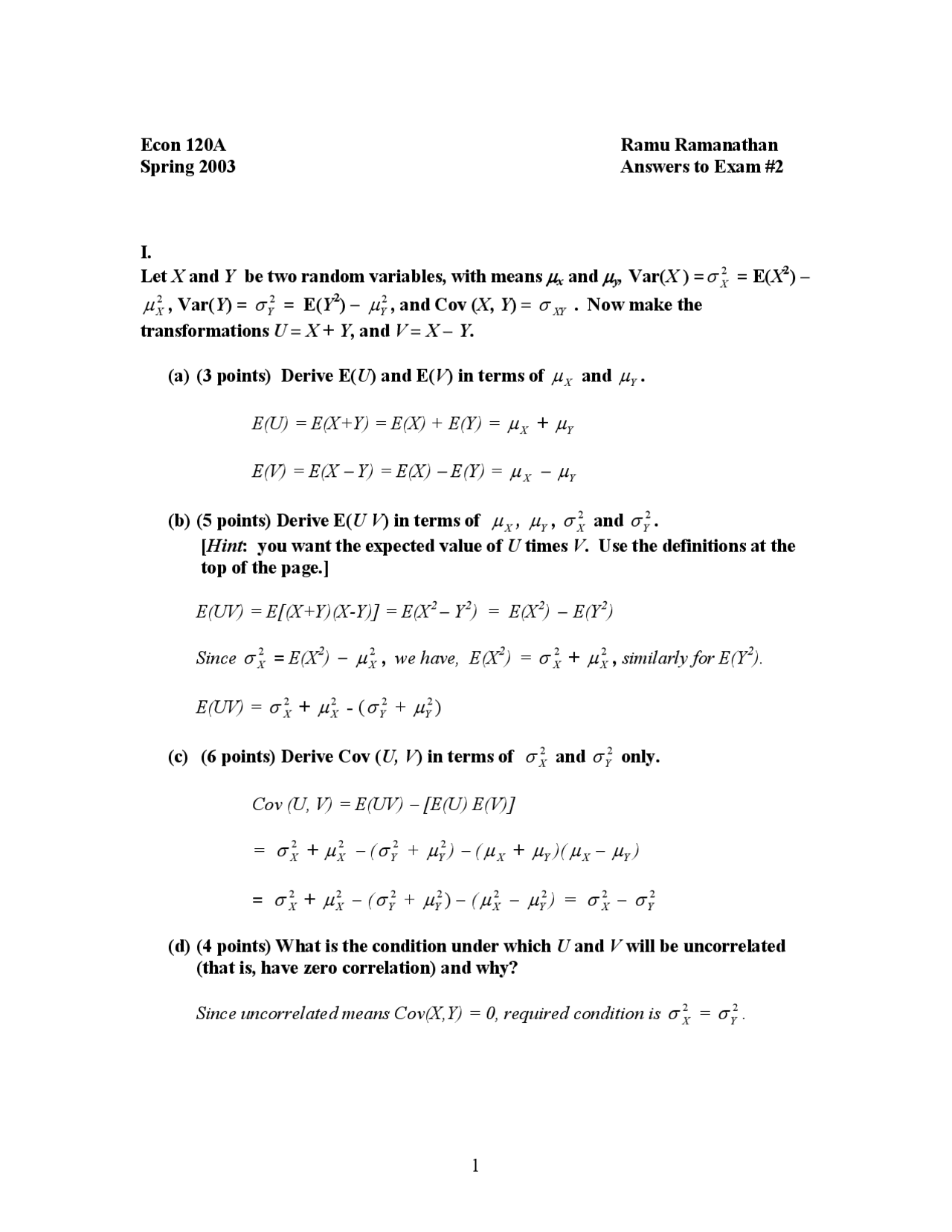



Answer To Exam For Political Development Of Western Europe Poli 1a Docsity



Solution Describe The Transformations On The Following Graph Of F X E X State The Placement Of The Horizontal Asymptote And Y Intercept After The Transformation For Example Horizon



Logarithmic Function
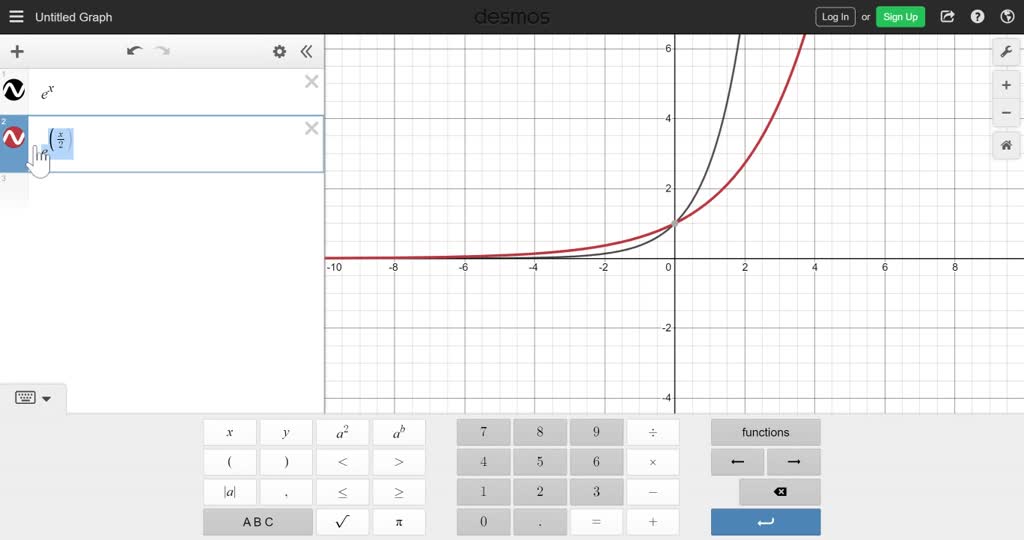



Solved Graph The Exponential Function Using Transformations State The Y Intercept Two Additional Points The Domain The Range And The Horizontal Asymptote F X 3 E X 2




Ex Match The Graphs Of Translated Exponential Function To Equations Youtube



1
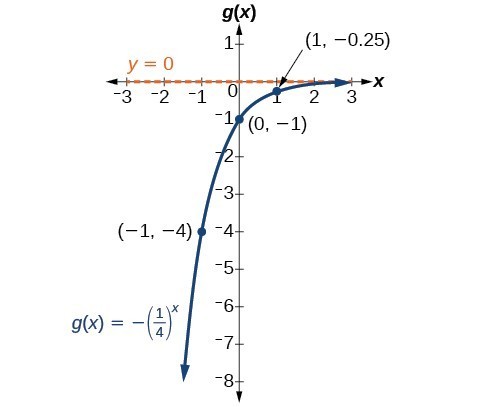



Graph Exponential Functions Using Transformations College Algebra




3 What Transformations Must Be Applied To The Gra Gauthmath



Images Pcmac Org




Unit 1 Function Transformations 1 3 Combining Transformations




Stretching And Reflecting Transformations Read Algebra Ck 12 Foundation



Solved Topic Graphing Transformations Of Exponential Functions The Transformations For Each Of The Following Functions A Use Transformations Course Hero
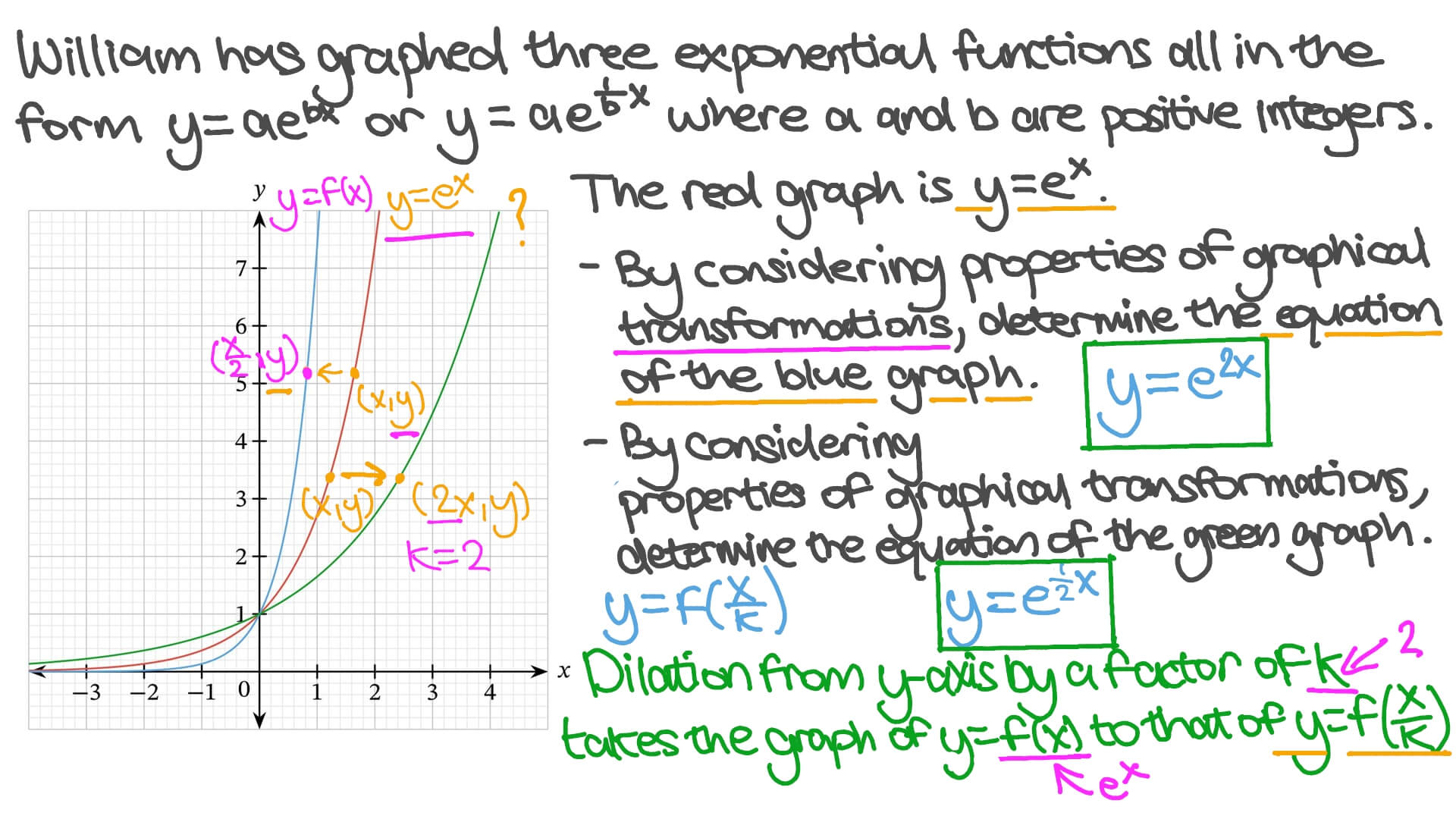



Question Video Graph Transformations Of Exponential Functions Nagwa




How To Draw Log Graphs Base E Etc
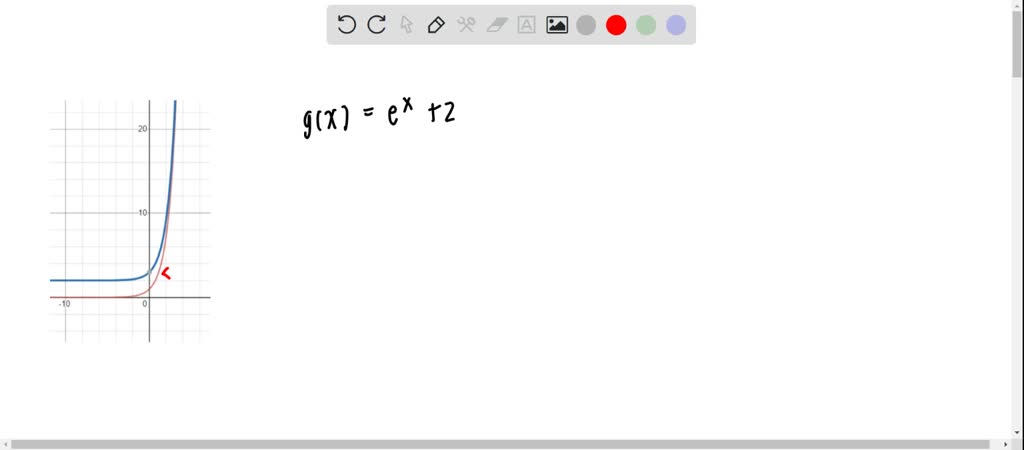



Solved Graph Each Function Using Transformations Of An Appropriate Function Of The Form Y B X G X E X 2




C3 Transformations
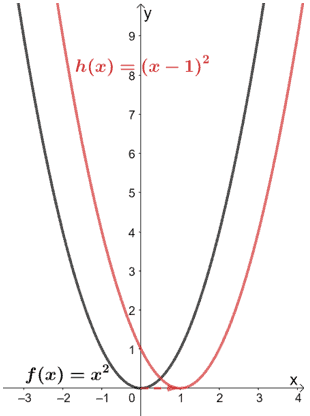



Vertical Stretch Properties Graph Examples



1




Graphing Exponential Functions With E Transformations Domain And Range Asymptotes Precalculus Youtube
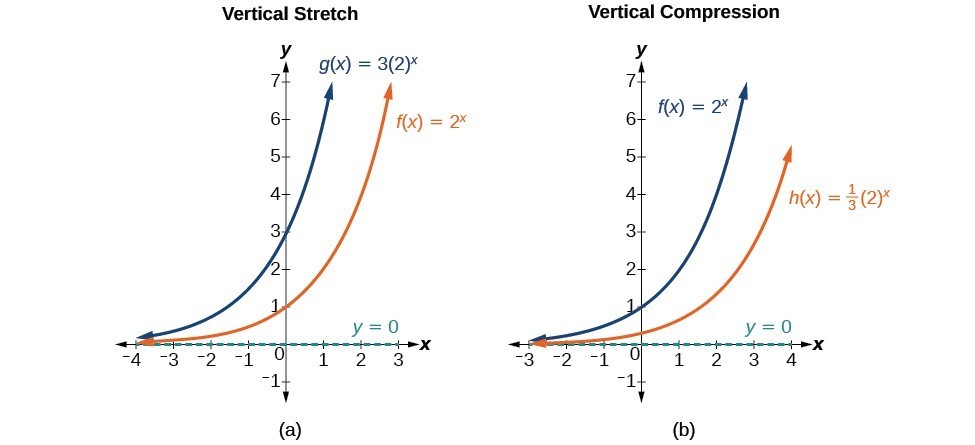



Graph Exponential Functions Using Transformations College Algebra
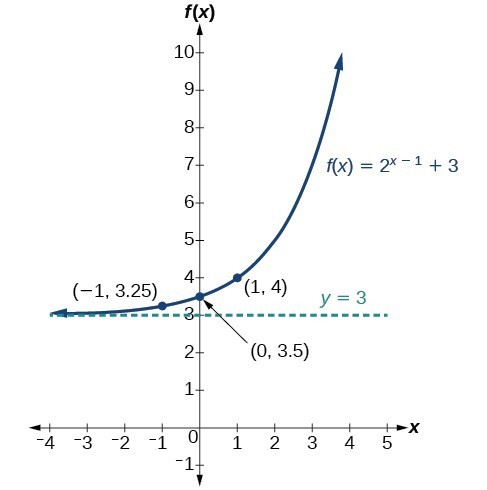



Horizontal And Vertical Translations Of Exponential Functions College Algebra



Basic Functions
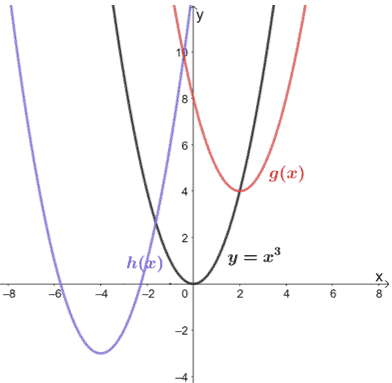



Transformations Of Functions Explanation Examples




Natural Exponential Graphs Iitutor
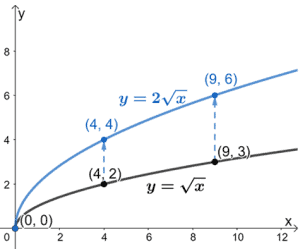



Vertical Stretch Properties Graph Examples




Describe Transformation Of Exponential Function Mcr3u Gcse Ibsl Youtube




Which Transformations To The Graph Of Y Ex Would Result In The Graph Of Y Ex 34 Brainly Com



Solution Describe The Transformations On The Following Graph Of F X E X State The Placement Of The Horizontal Asymptote And Y Intercept After The Transformation For Example Left
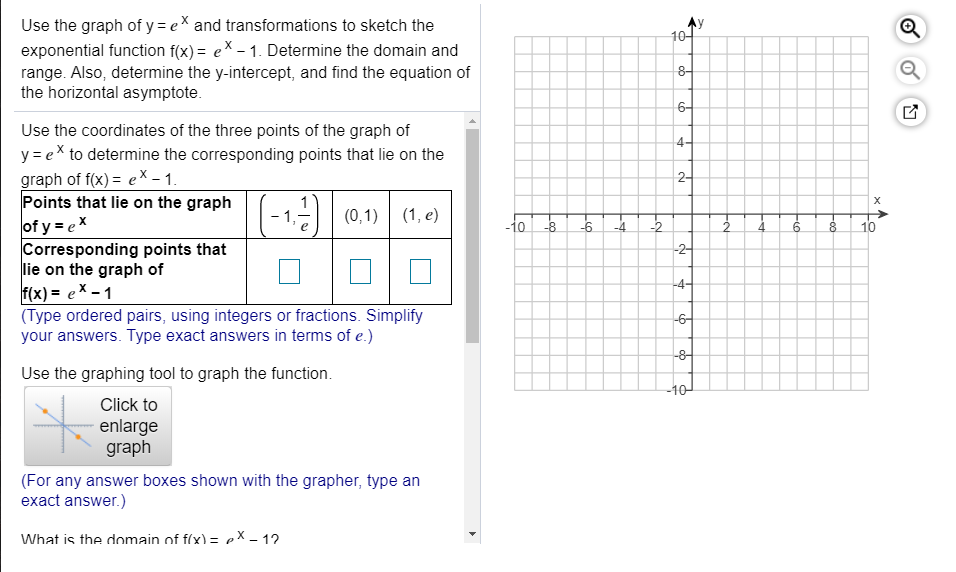



Solved Use The Graph Of Y Ex And Transformations To Sketch Chegg Com




Algebra Review Exponents Bx Exponent Base Add Exponent




Ex Graph A Transformation Of The Tangent Function Period And Horizontal Shift Youtube




Algebra Parabola Transformations Of Y X2 Graphs Match Up 2 Algebra Quadratics High School Mathematics
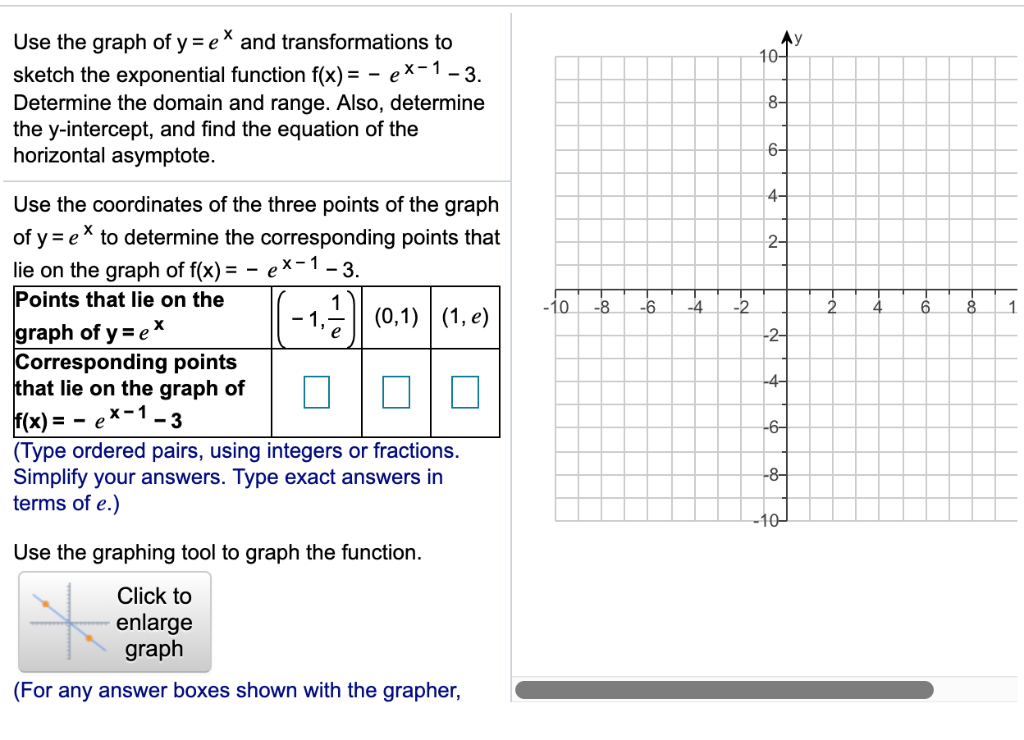



Solved X Use The Graph Of Y E Ay 10 And Transformations To Chegg Com



Bestmaths



Sketching Transformations Use The Graph Of F See Figure To Sketch Each Graph See Example




The Exponential And Natural Log Functions




Sketch The Graph Of F X E X Making Sure To Label All X And Y Intercepts Maximums Minimums And Inflections Points Study Com




Exponential Function Transformations Board Game Activity Exponential Functions Algebra Activities Functions Math
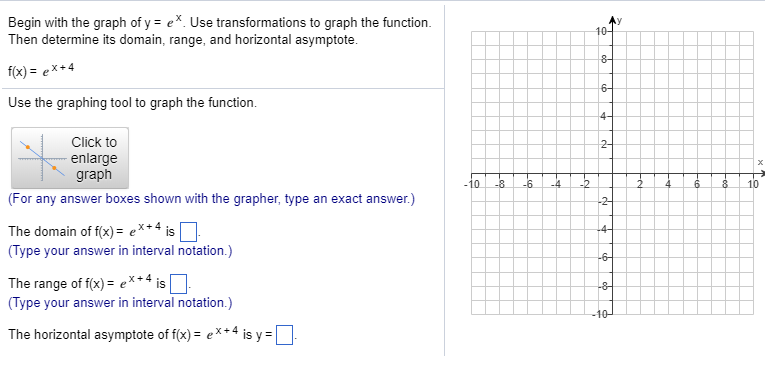



Solved Begin With The Graph Of Y E Use Transformations To Chegg Com




Solved Begin With The Graph Of Y Ex And Use Chegg Com




Transformation Of Graphs By Modulus Function Functions Openstax Cnx
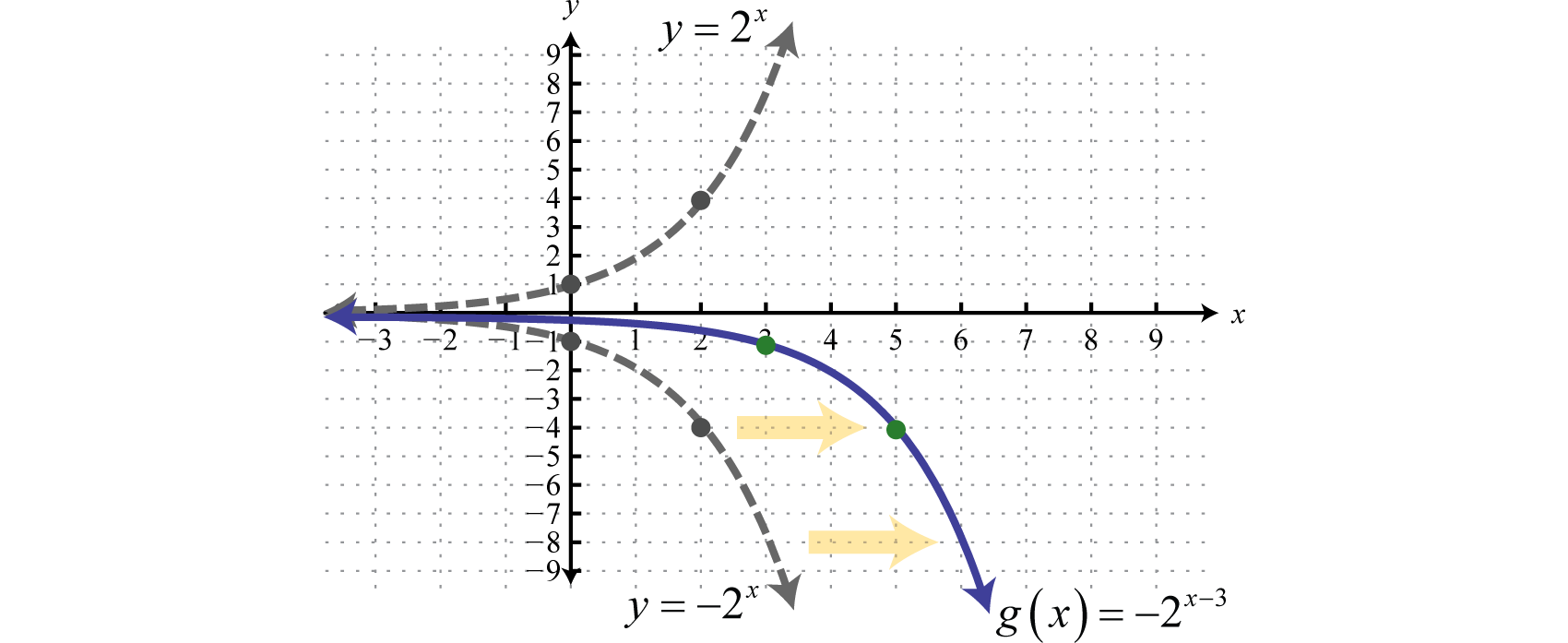



Exponential Functions And Their Graphs




Module 09 Natural Exponential Y E X
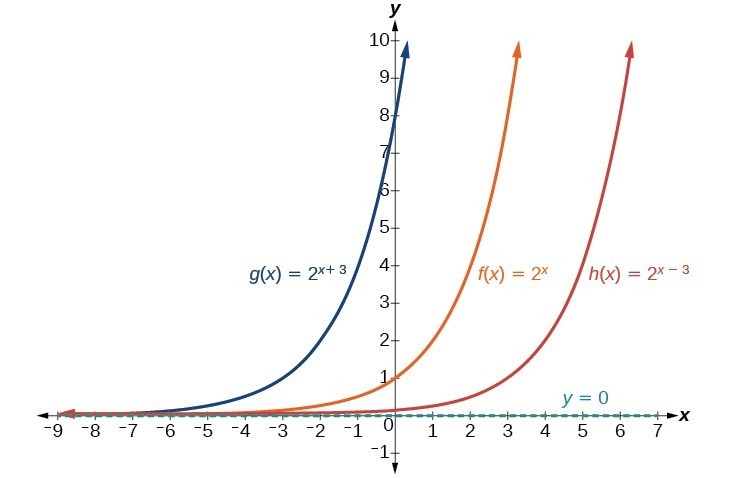



Graph Exponential Functions Using Transformations College Algebra




Figure Efgh Is Transformed To E F G H As Shown Which Of The Following Sequences Of Brainly Com
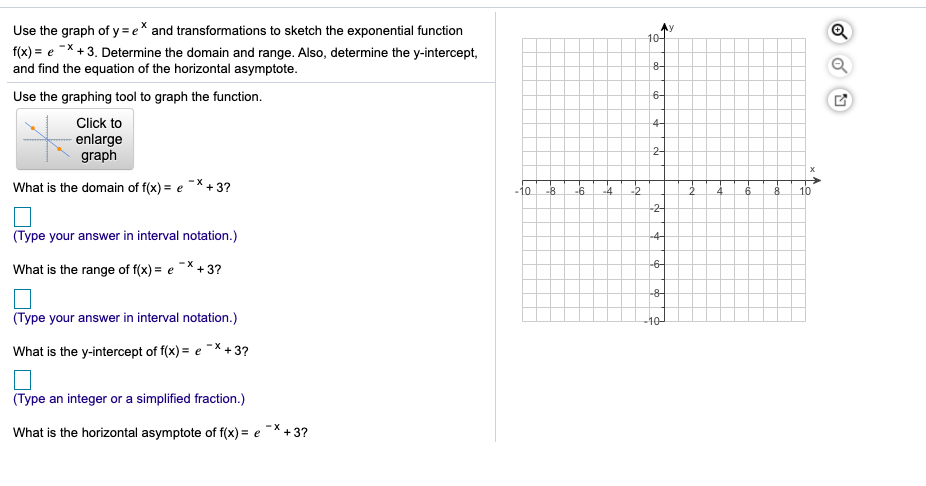



Solved Ay 10 1 Ob Q 6 1 Use The Graph Of Y E And Chegg Com



Exponential Curve Transformations Graphing Advice The Student Room




Ppt Exponential Functions Powerpoint Presentation Free Download Id




Could You Explain Why Frac D Dx E X E X Intuitively Mathematics Stack Exchange




Describe An Exponential Function Transformation Y E X 3 Youtube




Solved Begin With The Graph Of Y E X Use Transformations Chegg Com




Ex 2 Find The Equation Of A Transformed Absolute Value Function From A Graph Youtube




Transformations In Math Definition Graph Video Lesson Transcript Study Com
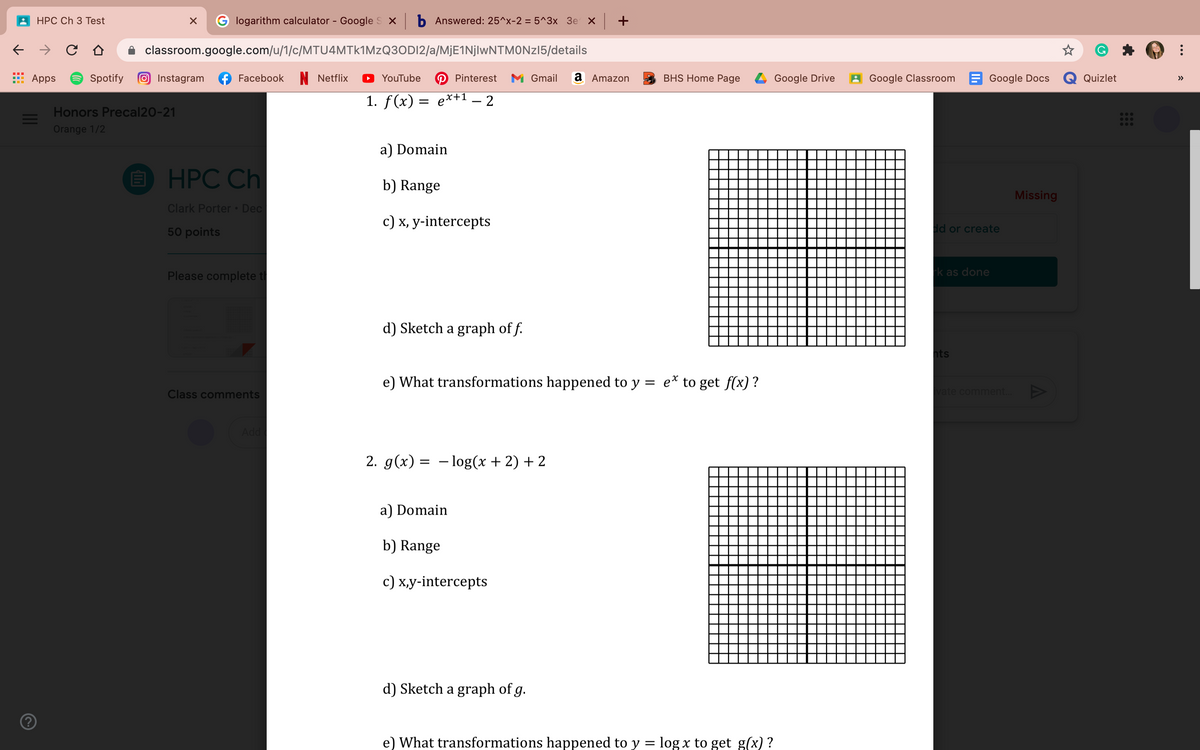



Answered 1 F X E 1 2 A Domain B Range Bartleby




Rest Particle Moving Particle And Photon Are Compared The Relative Download Scientific Diagram
コメント
コメントを投稿